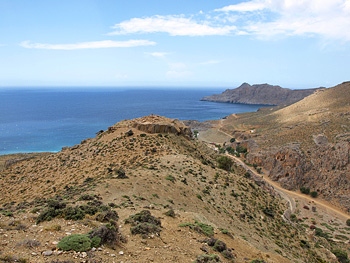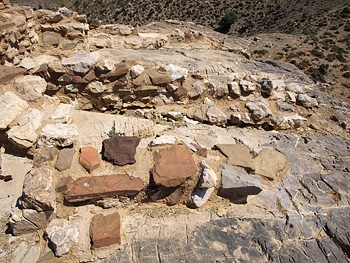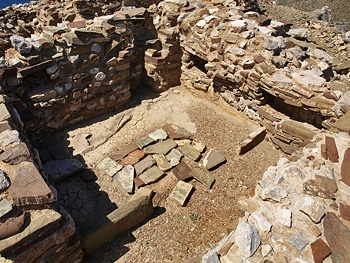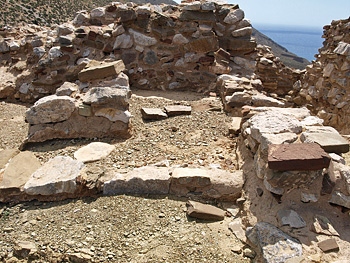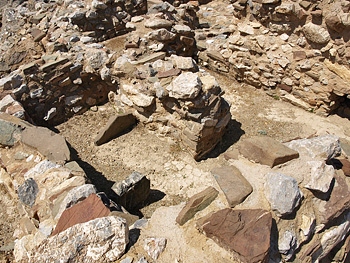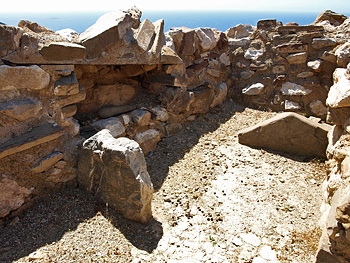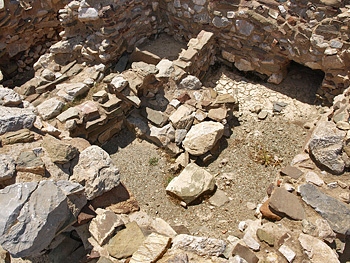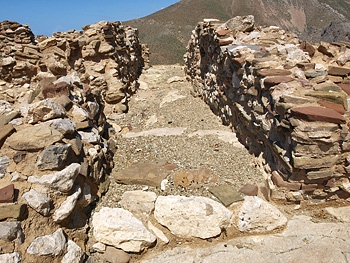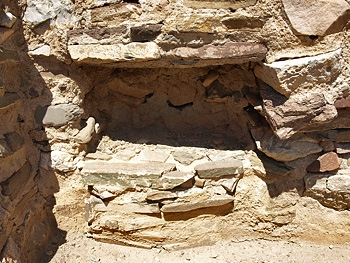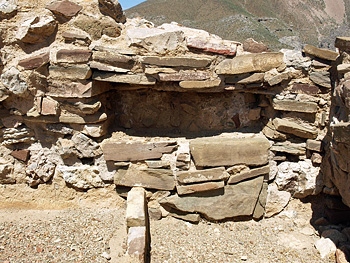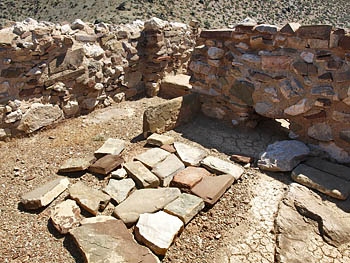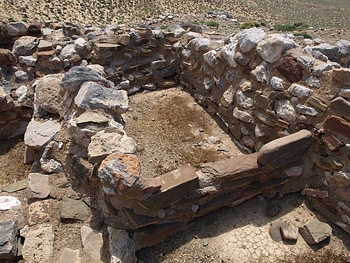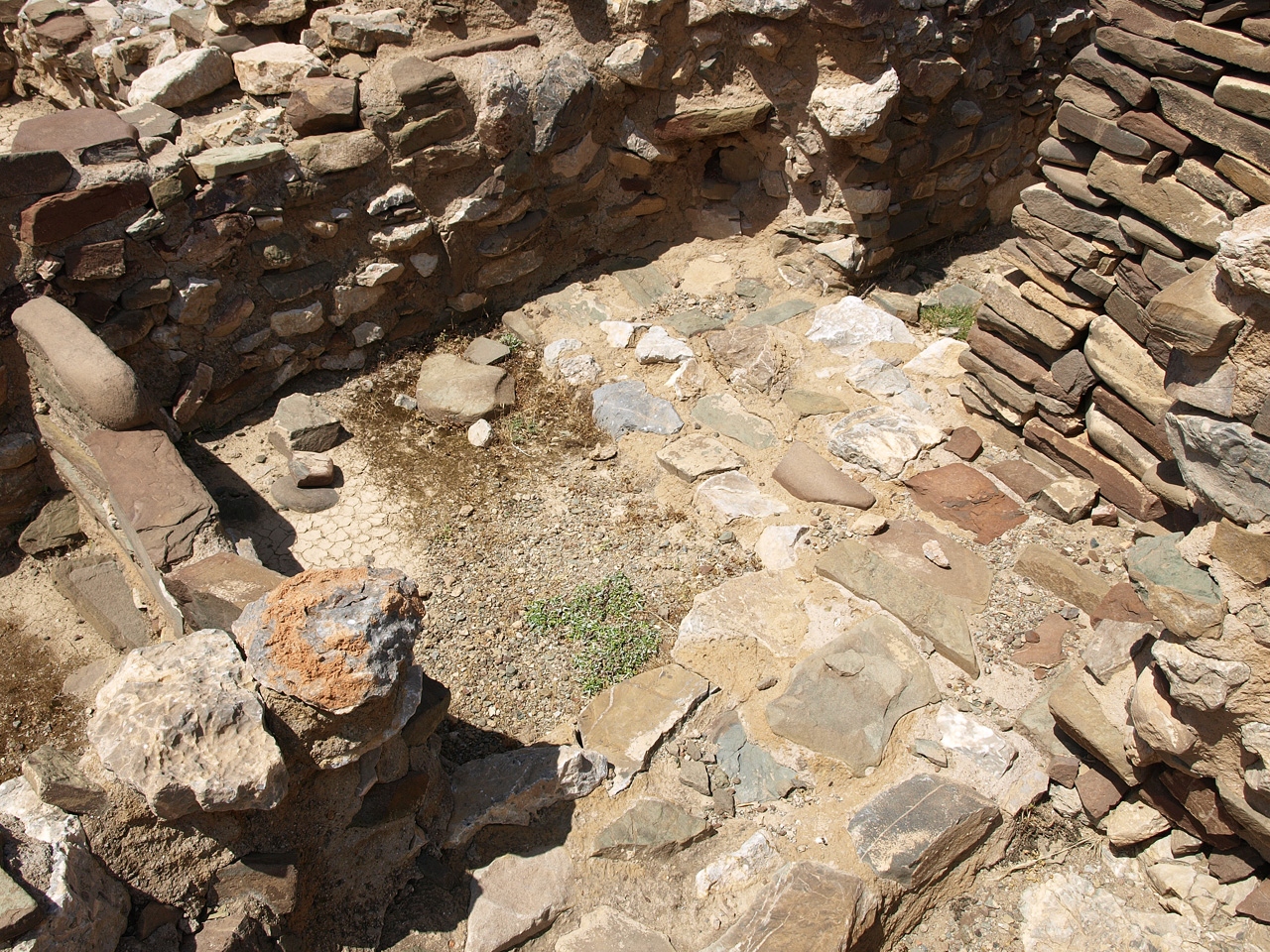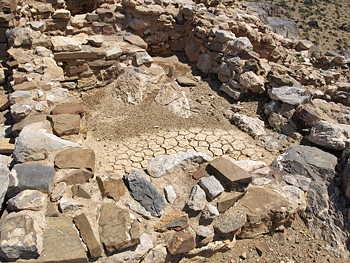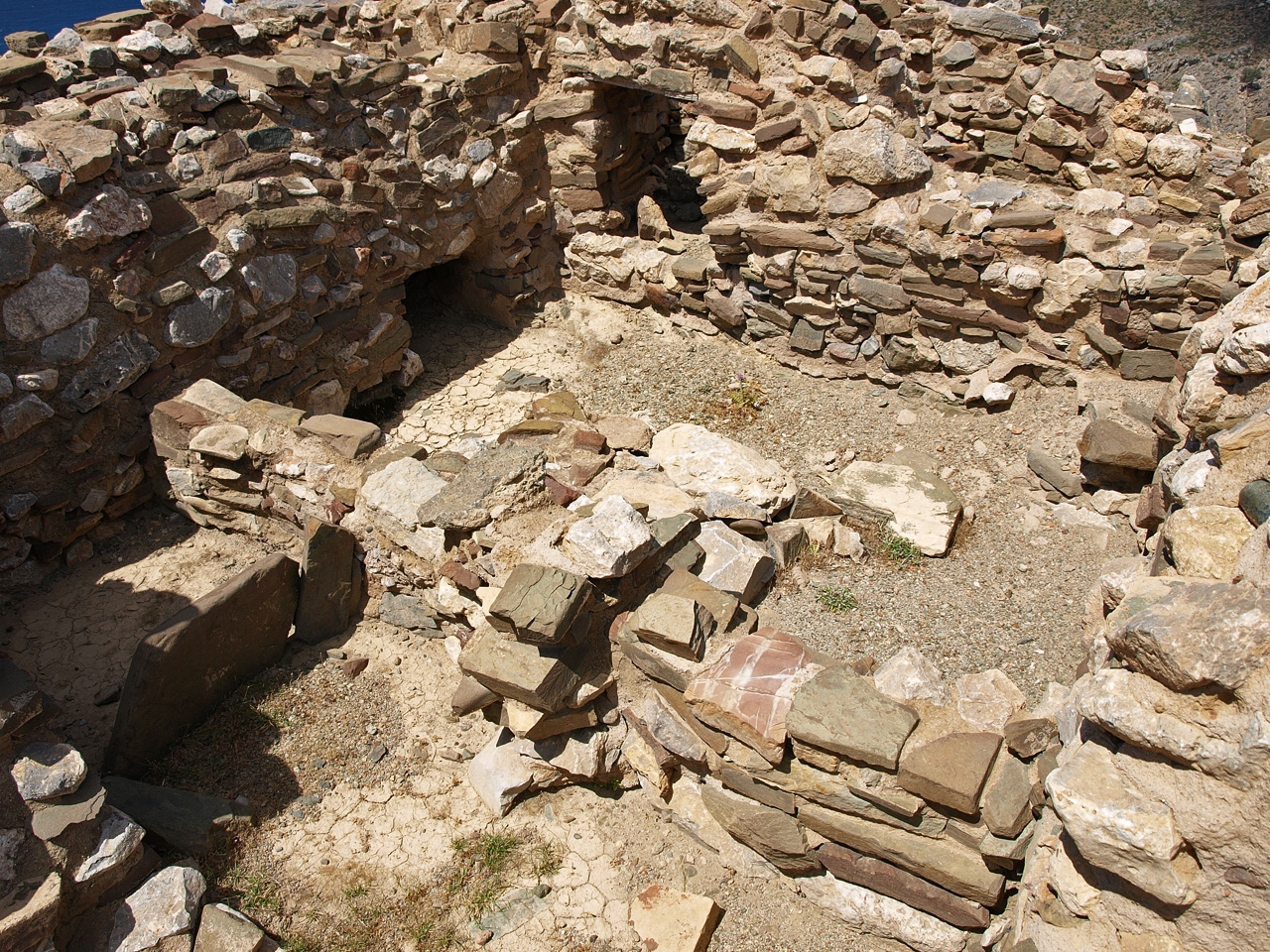A hilltop settlement
The excavation of the Early Minoan settlement of Trypiti (also Tripiti) was carried out by Antonis Vasilakis between 1986 and 1988, and provided the first opportunity to study a Minoan settlement in southern Crete that was contemporaneous with the nearby tholos tombs of the Mesara, which had been excavated decades before.
The settlement was built on a rocky hill 135 metres above sea level and 800 metres from the sea, with perpendicular walls around the settlement apart from two openings -- one in the south east and one in the north west, which were used as entrances to the settlement.
The village is divided into two sections of unequal size by a path, 1.5 metres wide. Thirty six rooms dating from EM II and from EM III-MM IA have been uncovered. Stone walls have been preserved to a height of 2 metres in some places. All rooms are square or rectangular and benches have been built against the walls in some rooms. All this suggests that the site was built to some design.
The northern quarter (i.e. the houses north of the wide east-west path) contains three self-contained houses, of which the best preserved had three rooms. The walls were built of stone and contained cupboards. The house of one floor contained a large central room and two long, narrow side rooms which were used as storerooms.
Of the two other houses in the northern quarter, the west section of the north-west house had collapsed and fallen down the side of the hill, as had the eastern walls of the north east house. Where the three houses meet there are not single walls but double walls, a feature unique for this period.
In the southern quarter four houses have been completely excavated and a fifth house partly excavated. A north-west house of this quarter stood out as having two building phases. This house also had a large central room and two long, narrow side rooms, one to the north and one to the west. Two built rectangular pillars supported the roof of the central room, which was divided by low narrow walls into four areas, one of which was a storage area. West of the central column on the ground was a hearth, a shallow hole full of ash and darkened earth. Among the vessels found here was a unique bronze chisel.
A wide variety of tools
Among the tools found on the site were stones for milling cereals, smoothing, polishing, as well as axes, weights, hammers and mallets, which were used fastened to wooden handles. Other stone tools included blades, flakes, etc., used for cutting, chopping and the fashioning of bone tools. The inhabitants were capable of making scythes, saws and knives used for harvesting, and other activities associated with food production and craft manufacture.
Bronze did not feature very widely in the tools manufactured for two main reasons. Firstly it was non-existent in Crete and secondly there would have been problems at this stage with importing it from other countries.
The millstones were indirect evidence of agriculture, but among the direct evidence of agricultural production were the significant quantities of cereals and pulses found in two rooms of the settlement. Among the produce identified were wheat, barley, cattle feed, peas and vetch. All these were cultivated at Kalokambos, an almost level area, south of the hill on which the settlement stood.
Also important for the diet of these early Minoans was animal husbandry and hunting. Among the bones found in almost every house in the settlement were those of cattle, sheep and goats, pigs, poultry and hares. Their diet would have been supplemented by fish from the sea.
Permanent springs
Although a visitor to the site might wonder what the early Minoans did for fresh water, there are in fact a number of permanent springs in the area. Three were located and used by the excavators, one only 150 metres east of the settlement at the same height above sea level. While no shrine or room with a religious use was found in the settlement a kernos was found on the floor of one house.
To the south, two more houses were located, one to the east and one to the west of the settlement, and these await excavation.
200 metres south of the settlement at Kalokambos a tholos tomb was excavated. The diameter of the tomb was about 5.3 metres, with walls 1.5 metres thick. The tomb contained ceramics dating from 2800 BCE to 2000 BCE.
Trypiti was abandoned for unknown reasons. No trace of fire or earthquake has been found. In early MM IB the inhabitants moved to Kalokambos, the flat lower area to the south. The eight MM houses which they built here were much larger and at a distance of about 50-100m from each other, leaving enough space for cultivation between them.
This introduction is based on an article by A. Vasilakis in the Greek journal Archaiologia issue 30, 1989.
The site is among the more inaccessible in Crete. The settlement is located on a hill above the bay of Trypiti, which is at the end of a 6 kilometre dirt track, that leads down from the village of Krotos on the road to Lendas. To reach the site involves a 40 minute steep climb over loose stones.


